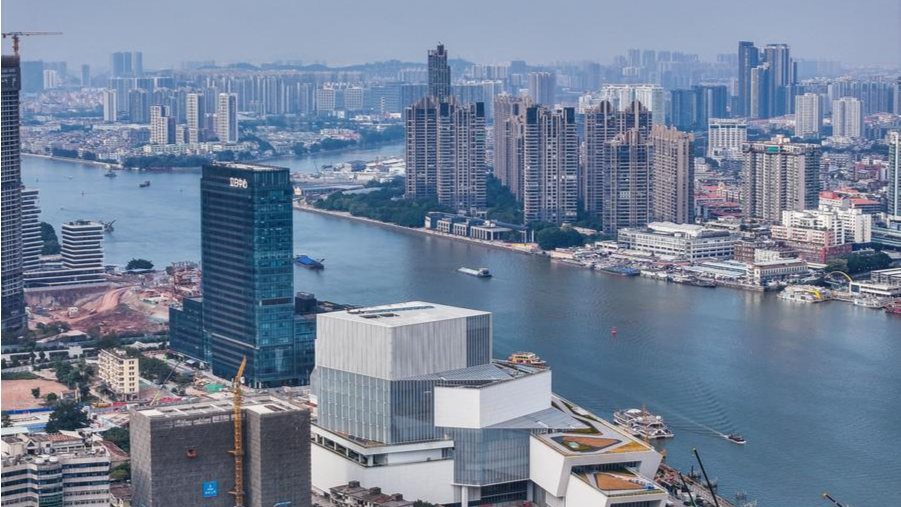
An increase in consumption and the development of the “new economy” have boosted commercial and industrial property markets in major mainland cities in the Guangdong-Hong Kong-Macao Greater Bay Area (GBA), with businesses and individuals raising the stakes in buying high-quality assets in the first half of the year.
Meanwhile, residential property markets in core cities like Shenzhen and Guangzhou have demonstrated resilience, with transaction activities remaining robust.
According to a report by international real estate advisory firm Cushman & Wakefield, Shenzhen and Guangzhou recorded 29 en bloc transactions — normally referring to property trading valued at 100 million yuan ($13.95 million) or above — in the first half of the year, nearly reaching the total of 35 recorded for the year in 2024.
READ MORE: Future of GBA real estate hinges on policy and tech integration
“While the average deal size of 500 million yuan was lower than last year’s 750 million yuan — reflecting a trend in more buyers purchasing for self-use — the increased number of bulk transactions indicates a more active property market in the Greater Bay Area,” said Jacob Chen, director and head of capital markets at Cushman & Wakefield South China.
Commercial properties in Shenzhen and Guangzhou are attracting considerable interest, with the profile of buyers diversifying from institutional investors to private individuals.
“Investors of various types are taking advantage of opportunities arising from price adjustments and interest rate reductions to seek value-for-money assets,” Chen explained.
Data from Cushman & Wakefield reveals that transactions of commercial properties accounted for 12 percent of the total en bloc transactions in Shenzhen during the first six months, up from 10 percent in 2024 and 4 percent in 2023. The growing interest in commercial properties, particularly shopping malls in Shenzhen and Guangzhou, reflects investors’ confidence in the region's purchasing power.
Official statistics indicate that retail sales in Shenzhen rose by 4.7 percent year-on-year to 411.59 billion yuan in the first five months, while Guangzhou's retail sales hit 470 billion yuan, an increase of 5.1 percent compared to the same period last year.
However, Chen noted that amid market uncertainty, investors are increasingly prioritizing stability and return on investment in their decision-making. “Historically, a 3-percent return on investment was considered adequate. Now, investors are looking for returns of 5 percent or even 6 percent before making commitments.”
The development of the “new economy”, notably artificial intelligence (AI) and biomedicine, has also driven demand for industrial infrastructure, further increasing the value of industrial properties in the Greater Bay Area. Chen mentioned that insurance funds are betting big on the segment and ramping up investments in industrial logistics projects, particularly in Dongguan and Foshan, both of which are recognized as manufacturing hubs in the country.
The residential markets in Shenzhen and Guangzhou have also witnessed notable vibrancy, with the transaction volumes of both markets posting double-digit growth in the first half.
According to Shenzhen Real Estate Intermediary Association, new home sales in Shenzhen rose 24.4 percent on a yearly basis to 15,101 units from January to June, while secondhand home transactions grew 30.7 percent to 35,106 units.
Guangzhou saw its secondhand home transactions rise by 12.98 percent year-on-year to 56,613 units in the first six months, data from Guangzhou Association of Real Estate Agents show.
Li Yujia, chief researcher at the Guangdong Planning Institute's residential policy research center, expects residential property markets in the two core Guangdong cities to maintain a stable trajectory overall in the second half, as the population inflow in the two cities could provide strong support for the industry.
READ MORE: GBA residential property market to improve in H2 amid policy support
The number of permanent residents in Shenzhen and Guangzhou increased by 199,400 and 151,000 last year, respectively.
However, Li pointed out that the residential markets are primarily driven by first-time buyers, while demand for upgraded housing options remains subdued.
“This imbalance poses challenges for the high-quality development of the property industry, as well as for the construction and supply of premium residential properties,” Li said.
Chen Yang contributed to this story.
Contact the writer at sally@chinadailyhk.com


